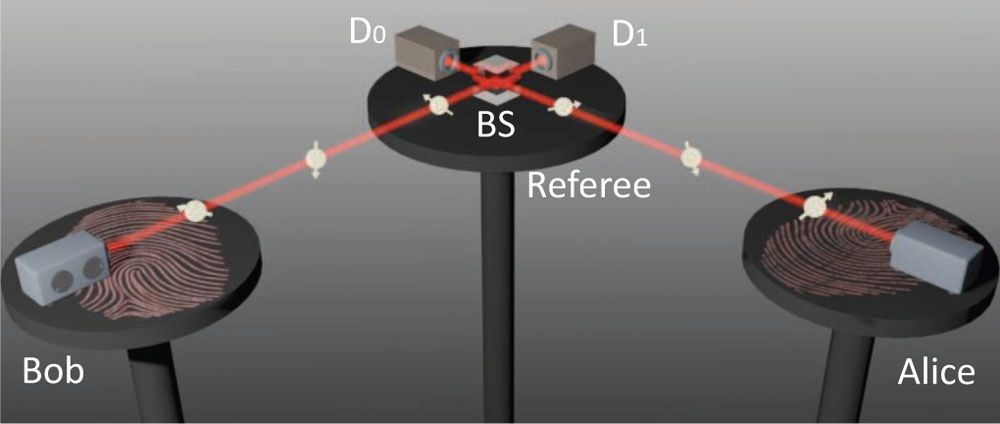Nice.
(Phys.org)—As the saying goes, no two fingerprints are alike, and the same is true for quantum fingerprints. Just as a human fingerprint is only a fraction of the size of a person, yet can be used to distinguish between any two people (at least in theory), quantum fingerprints are exponentially smaller than the string of information they represent, yet they can be used to distinguish between any two strings.
Ever since quantum fingerprinting was first proposed in 2001, it has for the most part remained an interesting theoretical concept, with only a handful of protocols having managed to experimentally demonstrate the idea.
Now in a new study, researchers have experimentally demonstrated a quantum fingerprinting protocol and shown that it can surpass the classical limit for solving communication complexity problems. In these problems, two parties each have a message, and they both share some of their message with a referee, who has to decide whether the two messages are the same or not. The classical limit requires that a minimum amount of information must be transmitted between each party and the referee in order for the referee to make this decision.
